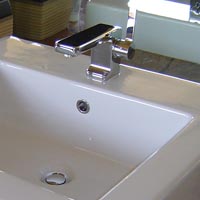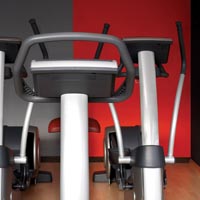
Remarkably, coughs and sneezes are far less likely to transmit pathogens directly between the sick person and another person in close proximity than do HTOs. The reason why HTOs are culprits in the spread of pathogens has to do with the daily habits that relate to specific hand-to-surface and hand-to-mouth practices of each individual. In other words, the more times someone touches a contaminated surface and then touches areas on their face like the eyes, nose or mouth, the greater the chance for transmission of human microbial pathogens.
Since microbial contamination can persist from hours to years, hand-to-surface contact on hard surfaces is 30 to 40 percent efficient in being picked-up. The transfer to the mouth from the hand is also 30 to 40 percent efficient. Taken together, both are dangerously efficient ratios.
In common uses areas, the common HTOs that are responsible for transfer of human microbial pathogens are doorknobs, telephones, computer keyboards, armchairs, fitness equipment and faucets, to name a few.
In schools, some of the most common areas of bacterial contamination are faucet handles and computer keyboards, while desktops were commonly contaminated with viruses. Studies have shown a correlation between contamination levels and student absenteeism.

A list of susceptible Highly Touched Objects include
Childrens playground equipment
Fitness and workout equipment
Shopping cart handles
Doorknobs
Chair armrests
Telephones
Computer keyboards
Desktops
Faucet handles
Bathroom fixtures
Paper towel dispensers



